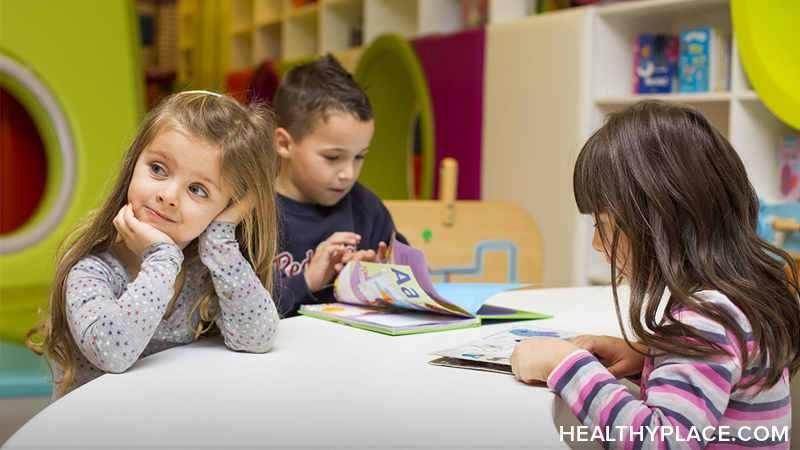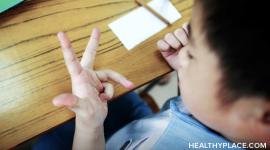What are the Different Types of Learning Disabilities?

The term “learning disability” is a blanket term that refers to multiple types of learning disabilities. In general, learning disabilities are brain-based disorders that disrupt someone’s ability to process and use information. Different types of learning disabilities interfere in different aspects of someone’s life, including school, home, family, work, and social interactions. Exactly how one’s life is affected depends on their specific learning disability type.
Before looking at the different learning disabilities, it’s worth noting two disorders that are not learning disabilities despite common belief. Attention-deficit/hyperactivity disorder (ADHD) and autism spectrum disorder (ASD) are frequently mistaken for learning disabilities. There is overlap between learning disorders, ADHD, and ASD. They share some symptoms and effects, and it’s not unusual for someone to have more than one of these conditions. Yet the three are quite distinct from each other, and ADHD and autism aren’t among the different types of learning disabilities.
Autism and ADHD aren’t learning disorders. The following conditions are types of learning disabilities.
The Most Common Types of Learning Disabilities
Children with learning disabilities aren’t alone. It’s estimated that between eight- and 10 percent of US kids under the age of 18 have a type of learning disability. The learning disabilities diagnosed most frequently are the three that negatively affect reading, writing, and math:
A whopping 39 percent of students with an Individualized Education Program (IEP) for special education services have one of these three learning disabilities (The Understood Team, n.d.).
Among the three most frequently occurring learning disabilities, dyslexia is the most common. Sometimes called a language-based learning disability, dyslexia is a reading disorder. Kids with dyslexia have difficulties understanding what they read, distinguishing between sounds in words, rhyming, and spelling. At its core, dyslexia is a language processing disorder that makes reading and comprehending feel impossible.
Dysgraphia is a writing disability that interferes in the act of writing and the quality of written expression. It involves problems with fine motor skills, clarity of thought, thinking and writing simultaneously, and other aspects of written language processing and understanding.
Dyscalculia means difficulty with calculations and math functioning. Kids with this math disability struggle to learn their numbers, counting, memorizing math facts, and solving problems. Measurement, telling time, and counting money can also be part of dyscalculia.
Dyslexia, dysgraphia, and dyscalculia are the most common learning disabilities types, but they’re not the only types.
The Different Types of Learning Disabilities: List and Descriptions
In the American Psychiatric Association’s catalogue of all known disorders of various types, the DSM-5, only one learning disorder is listed as the official diagnosis to be used: specific learning disorder. That has subtypes to describe the learning disorder more specifically. However, in the world outside of the manual, people still conceptualize learning problems by type.
In addition to dyslexia, dysgraphia, and dyscalculia, different learning disabilities types include:
- Auditory processing disorder (or central auditory processing disorder); unrelated to hearing, this disorder affects how the brain interprets and processes sounds
- Language processing disorder, a component of auditory processing disorder, disrupts a child’s ability to make sounds meaningful
- Visual processing disorder means kids have problems processing, understanding, and using visual input. It’s unrelated to sight and instead causes issues with seeing the order of words, interpreting images, using visual cues for coordination (visual motor problems), and other visual processing deficits
- Non-verbal learning disorder creates problems with interpreting facial expression and body language which in turn can cause poor social skills; kids with this a non-verbal learning disorder have issues putting visual cues together to make predictions or understand the bigger picture.
When a child is tested for a learning disability, they are given a diagnosis of one of the different learning disabilities. That way, their symptoms and the effects of their learning difficulties can be targeted and treated. Knowing the different types of learning disabilities leads to better, personalized treatment for kids.
APA Reference
Peterson, T.
(2022, January 17). What are the Different Types of Learning Disabilities?, HealthyPlace. Retrieved
on 2025, December 31 from https://www.healthyplace.com/parenting/learning-disabilities/what-are-the-different-types-of-learning-disabilities



